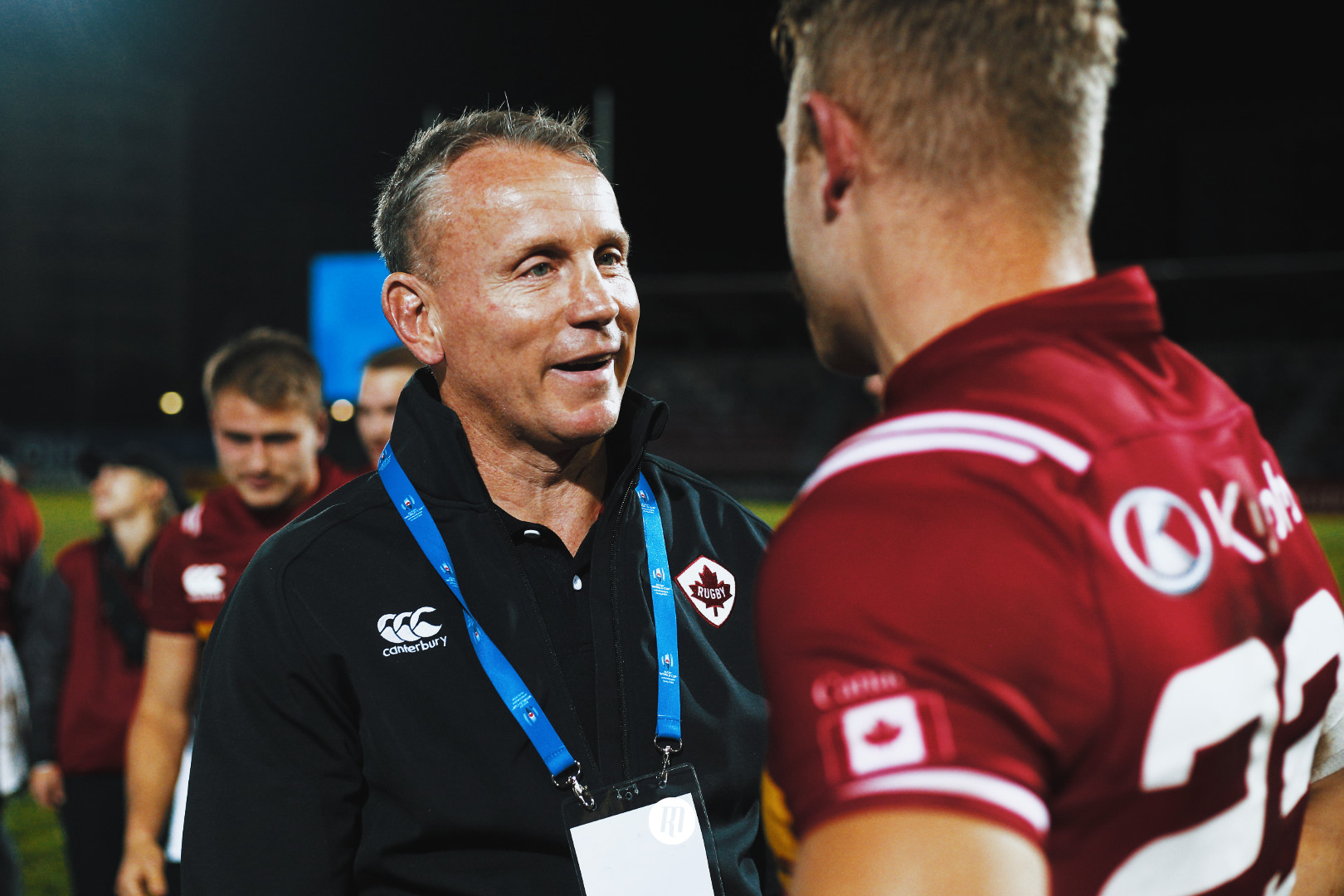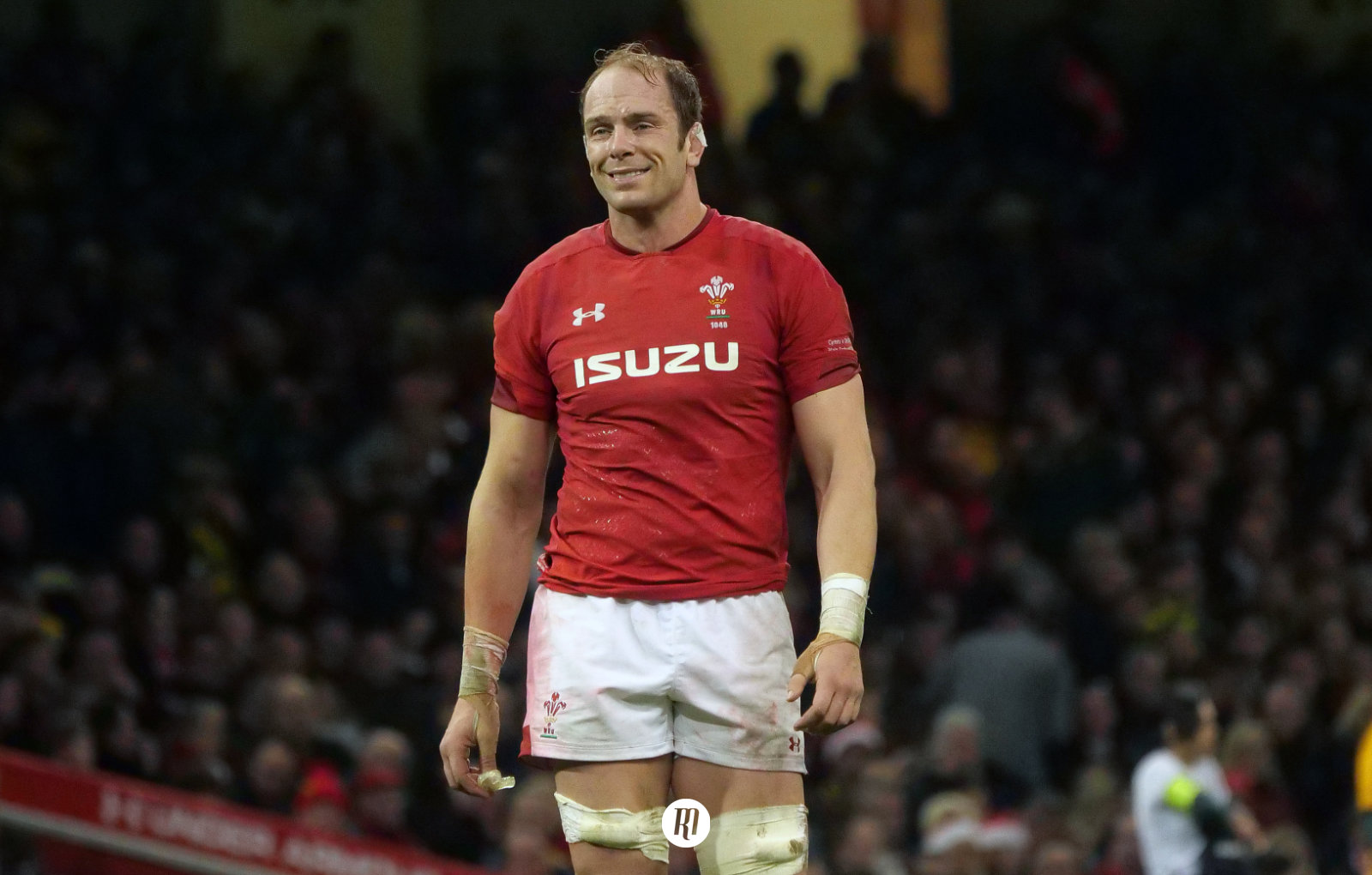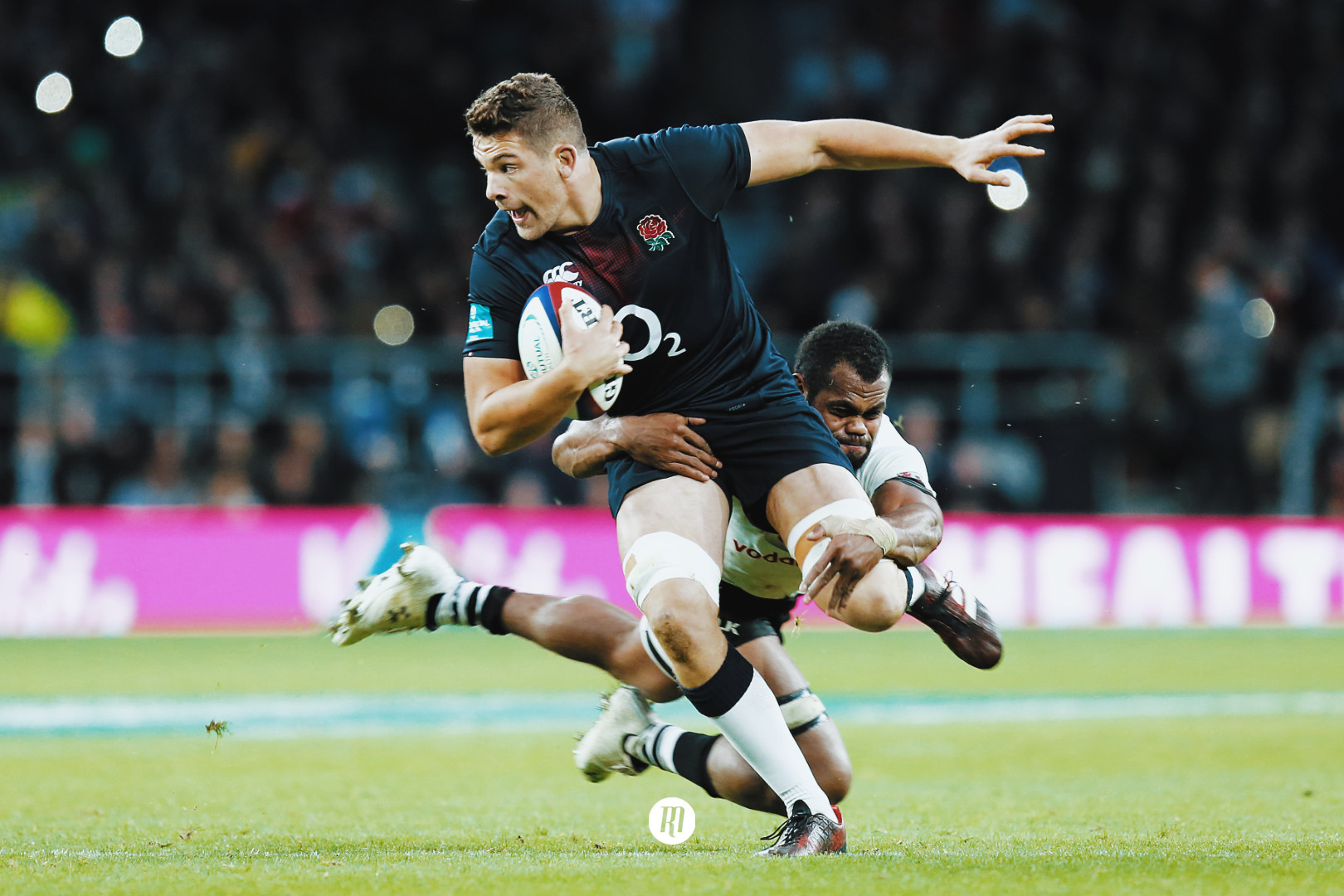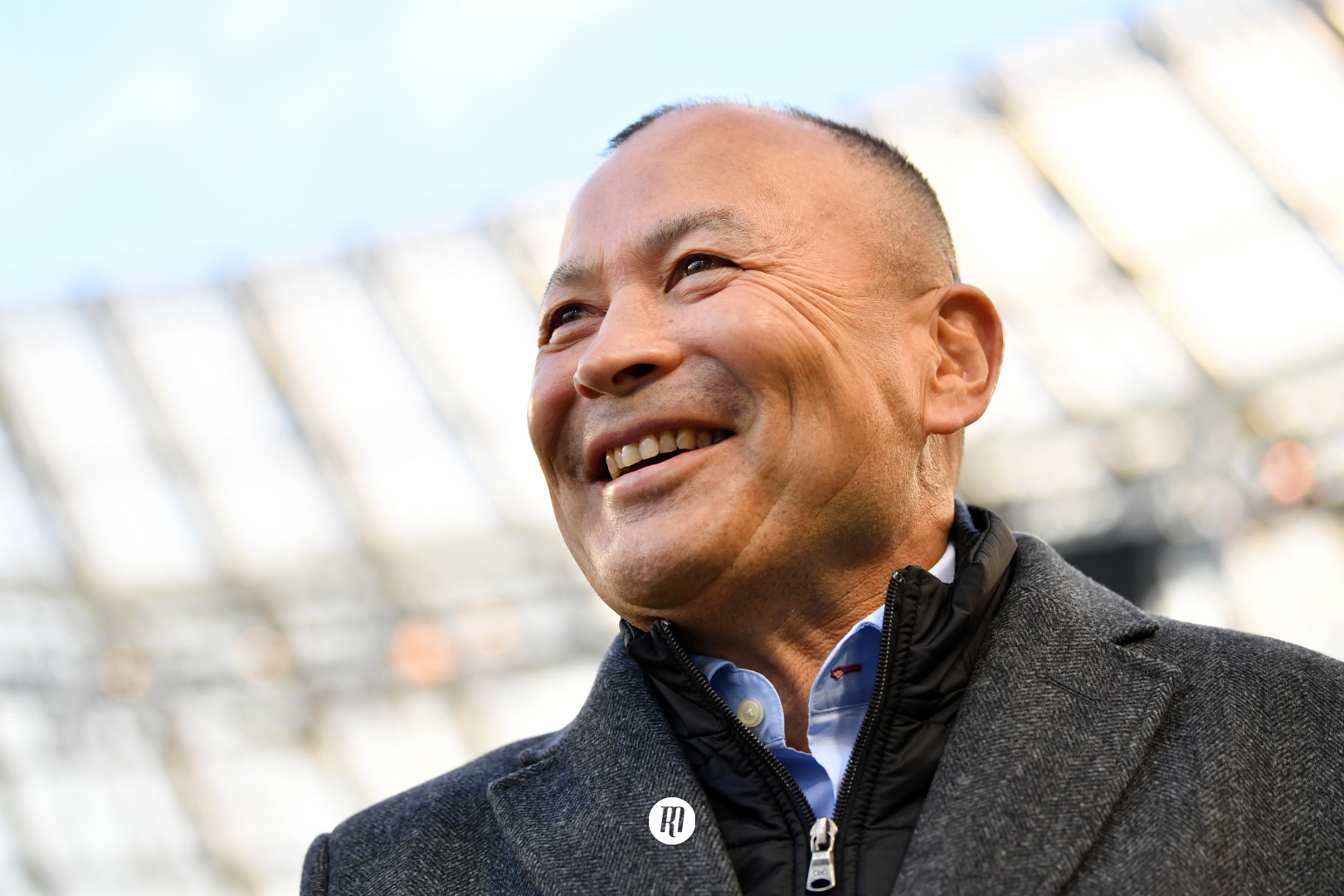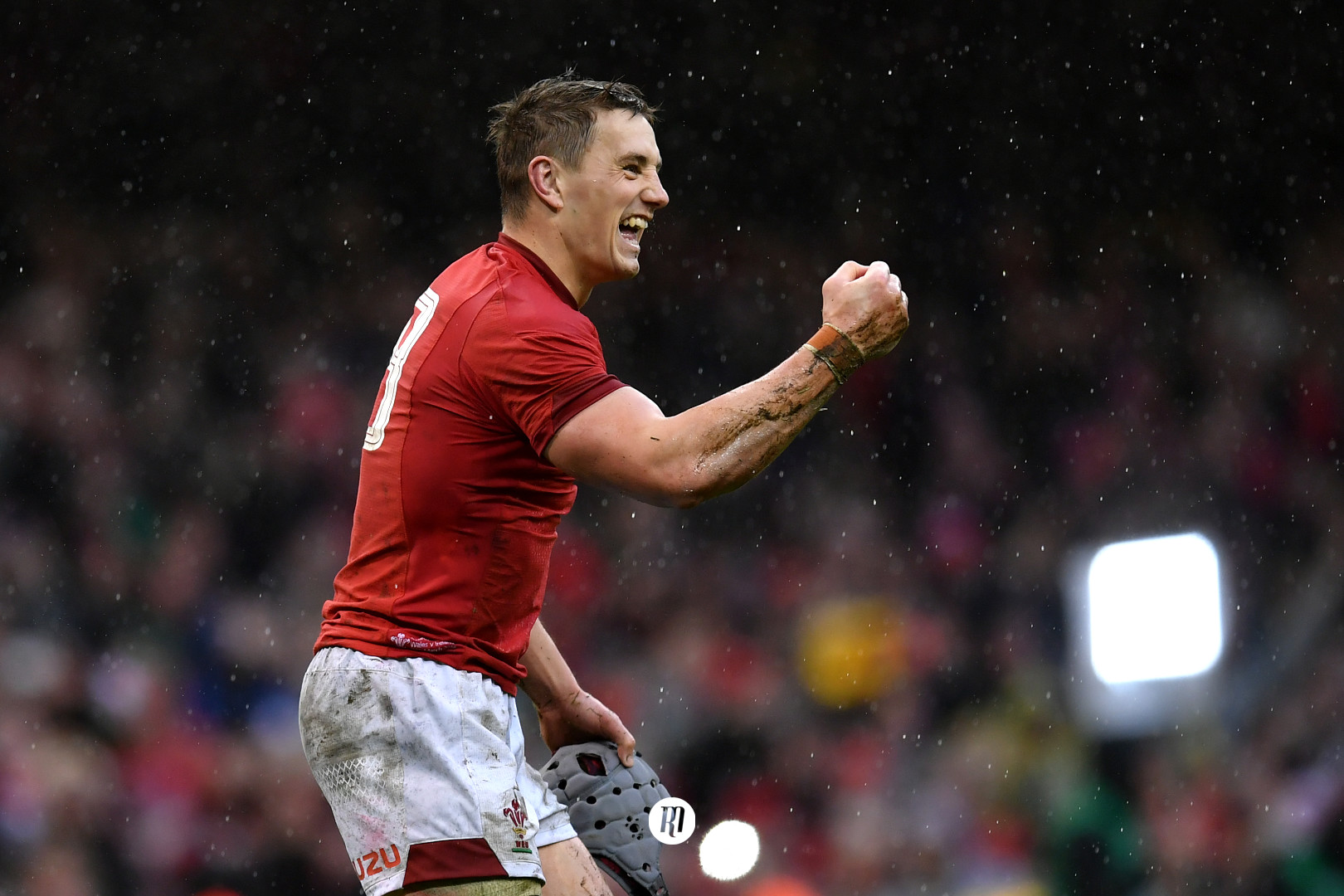Kingsley Jones: The priceless MLR, Canada's revival and the player release plague
Canada. The land of the maple leaf. The Nation that gave us the comedic offerings of Jim Carrey, the dramatic directings of James Cameron and, curiously, the gas mask; the latter at the courtesy of the fantastically named Cluny MacPherson. But, where rugby is concerned, the Canadians were the last through the doors of the 2019 Rugby World Cup qualification, a once up and coming rugby demographic that has since taken a significant recession. Or at least, that is the word. However, team Canada boss and Welshman Kingsley Jones tells The Rugby Magazine that it is more a case of the rest of the world moving forward.
“There are lots of stories and lots of things [said] about the demise of Canadian rugby,” Jones says as he takes one of his regular early morning calls from the UK while on his commute to a 6am to 6pm day, “the bottom line is that they [the players] were amateurs playing against professionals.
“The top 25 teams in the world now are in a daily training environment, and they’ve got players playing in competitive leagues,” Jones explains. “That’s the biggest thing, game time, you know. You try to select a team and you don’t know who’s in form and who’s not, because they weren’t playing."
Jones took the role as Canada’s head coach almost exactly two years ago in 2017 after five years with the Welsh Pro14 outfit the Dragons. As a player, Jones picked up ten caps in the Wales backrow and played for six different clubs, going on to coach at Doncaster, Sale Sharks, London Welsh and even Russia before his move to the Dragons. Since Jones took the reigns in Canada, there has been a significant development in the introduction of Major League Rugby, another attempt at a professional league in America in which Canada is represented by the Toronto Arrows, who finished third in the nine-team 2019 season, soon to be expanded to twelve sides in 2020.
Jones, now a 50-year-old coach sixteen years into life with the whistle, sees Canada's fall as more of a case of the rest of the world moving forward than the North American nation dropping off the side of the rugby landscape. Now, with MLR in place and the reinstatement of a player pathway, he believes Canada is finally ready to return to the tracks.
Fresh off the back of a first season in the MLR, the Arrows –and the American teams containing Canadian players - have provided Jones with an invaluable platform. A platform on which his adopted nation has found a way of filling the national squad with mostly full-time professionals based stateside alongside the few stars plying their trades overseas.
“It's [the MLR] everything. It’s a lifeline. It's unrealistic to think that amateurs can play against professionals, and that's what we were expecting of Canadian rugby.” Jones explains.
“The MLR semi-final, the Toronto Arrows against the Seattle Seawolves, you know, there’s over 28 players, Canadian players, on display in the game. That is, well, it’s everything. It was essential really, to get that. The MLR’s got a little way to go, it’s still in its infancy. But it’s everything, I think, to both American and Canadian rugby at the moment. It’s fantastic news for both.”
Having a professional league, even if Canada can boast only one team, is not the only lifeline Canadian rugby has been handed, with Jones insisting that the resurrection of a Canadian academy programme that provides players leaving university with a pathway into the sport post-education.
“There’s a lot of growth. There’s a few game-changing things happening now. The academy programme started last August. It was running through the 90s and 2000s but it ended in 2011. At 21, 22, these guys didn’t really have a pathway or any way to continue playing unless they got an occupation to support themselves. So this is the plan for the 18 to 23 year-olds to continue with their rugby development. So we’ll have 25 guys aged between 18 and 23 in that daily training environment, hopefully, that’s a pathway into the MLR.
“Just to start a competition like that of that magnitude is a huge challenge. If you watch the final between San Diego and Seattle, you look and it’s a proper match with five, six thousand people plus watching it. And don’t forget, it’s more than just on the field. It’s the showcasing of it, the commercial side of it. I think there’s been some incredible growth in 18 months.
“And there’s a huge amount of growth to come, just by putting a team together and organising it. In terms of culture, it’s all brand new, so it’s a bit messy. But, each season that goes by each team will establish their own culture, they’ll stabilise themselves. They'll get some continuity with their coaching and all those things will continue to grow. I mean, some guys are doing on a shoestring. Some guys are player-coaches, they haven't even got a proper infrastructure with a coaching staff yet. But it's going that way, and it'll just grow and grow.
“But, that’s the pathway and without the pathway, and it’s the same in any occupation, you’ve had it. I think Canada can be competing amongst the best fifteen in the world in the next, three, four years. I think that’s a realistic target.”
To reach this goal of competing regularly within the top fifteen teams in the world, Canada will have to jump up from their current spot as the 21st ranked team in World Rugby, looking to leapfrog the likes of Russia, Spain, Samoa and Tonga. With the USA currently nestled between Tonga and Italy at 14th, the promise of even closer proximity, even if only on the ranking system that has come under such fire of late, between the two traditional rivals would be welcome competition for the sport.
This being said, Jones takes some umbrage with Canada’s current spot in the rankings, highlighting the fact that the issues the Pacific Nations teams like Tonga, Samoa and Fiji have had with European clubs failing to release players has also affected Canada.
“The ARC (Americas Rugby Championship) was put in place in February, March and April. And, you know, they're [Canada] playing in that competition with a second-string team, that's what they've been doing. Now ultimately, it's the ten or twelve best players based in the southern hemisphere and northern hemisphere, they've struggled to get released.
“Yes, by World Rugby's laws they should be released, but it doesn't happen. The reality is they get pressure put on them to stay with their teams during those periods. So for example, this year's ARC, with the MLR in place as well, we were literally playing three or four deep in that competition, and they’re world ranking games. So when Canada play in those games against Uruguay and Brazil they are actually playing with a second, third choice team, and that's been going on for the last four years. So that's led to a bit of a deceiving picture when actually they are very rarely playing with their first choice team.”
As Jones swaps from hands-free to his handset and the chinking of a building’s gates can be heard, he concedes 2019 may be too soon for Canada’s recent developments to take effect on the field. “Look, let's not get away from the fact that we're in good shape to go to the World Cup, but 2023 is where Canada are aiming.
“When I came here and I looked at the progression chart, there weren't any players in this team aged between 26 and 31. That is when players are arguably at their best. I've got a 2023 World Cup squad on my office wall, four deep. On there are a couple of players that they're looking at in blue. They’ll be for 2027, so they’re 18-year-olds now. And that's what every top team will have on their wall, of course.”
In addition to the new academy pathway for players between 18 and 23 and the role of the u20s side, the function that Canadian players overseas and veteran players will serve in the MLR will also be crucial, Jones believes. While he is aware of the risk of saturating the league with hoards of foreign imports, he believes that the presence of older players in the twilight of their career can have a poignant impact on the quality of the teams, league and national sides.
Ben Foden, the 34-year-old fullback with as many England caps to his name, is currently plying his trade for Rugby United New York and is the type of player Jones believes will aid in the MLR teams' gradual assimilation with the life and culture of rugby professionalism.
And the ideal type of player to fill this role? “It's the obvious one, isn’t it," Jones says, "a player that's been around the scene for a while, over 31, looking for something to finish off for three years. That's the type of player that helps. Don't get me wrong, we don't want to fill teams with players that don't qualify for America and Canada, but there's obviously positives in having those pros that bring a lot to the environment. Being professional isn't being paid. Being professional is how you behave. I brought Gavin Henson back to the dragons two years ago and it wasn't all about just being on the field on Saturday. It's what he brings to the environment.”
The Canada head coach takes almost weekly calls from players known to him personally and through others asking about the life as an MLR player, naming former Sale wing Tom Brady as a man to have enquired about a move over the Atlantic, considering the option of falling in step with the path trodden by Foden. New York are set to be joined by another experienced ex-international in the sizeable frame of former France centre and Lyon backrow convert, Mathieu Bastareaud. Surely, these men are the most prominent frontrunners for more players culminating their playing careers somewhere off the beaten track, making a difference to both their new club and the national game of two of rugby's 'sleeping giants'.
Currently, there are two sides to the Canadian coin, heads: the players representing the Arrows and other MLR sides, tails: the stars impressing overseas, striving to add levels to their game that only the best professional leagues in the world can take them to. Two names stand out in amongst the 10 players in the current 42-man training squad plying their trade in Europe and, in one case, New Zealand – Glasgow Warriors wing DTH Van der Merwe and Chiefs lock/eight Tyler Ardron.
Van der Merwe is the current Canadian record holder for tries scored, with 38 in his 57-match career to date. Jones describes the South African-born wing as “one of the best try scorers out there in world rugby”. Ardron, meanwhile, is tearing up trees in Super Rugby for Waikato-based outfit the Chiefs at both number eight and in the engine room. If he was New Zealand qualified, Jones is convinced he would have spent even more time than he has to date captaining the Chiefs.
“He's [Ardron] a huge, huge success story. He's set an example for what can be achieved by a Canadian or an overseas player. It's making other teams sit and look up at Canadian players or American players because they've [Van der Merwe and Ardron] set the standard.
“Tyler's got this huge responsibility because he's representing Canada every time he plays in Super Rugby. He’s been outstanding and Colin Cooper [the Chiefs head coach] has made him captain of that team when there's been one or two injuries. I daresay perhaps if he was a Kiwi he would have been captain more often. Brodie Rettalick's been injured and he [Ardron] keeps stepping into a massive leadership role. He's done Canada proud.”
As far as Jones is concerned, the higher the standard of rugby his players can expose themselves to on a daily basis, the better. The dream scenario may be to have the vast majority, if not the entirety, of his squad training and playing within the MLR, but for now the more players like Ardron, DTH and Newcastle Falcons' lock Evan Olmstead in the top flight of professional club rugby the better.
Jones will lead his Canadian side to the Japanese World Cup honest in his acceptance that, despite the lengthy strides taken over the last 18 months, they are unlikely to wow fans and signal a resurgence of the Canadian variety, but resolute in his belief that the experience will play a large part in the 2023 and 2027 sides that will have what it takes to compete with the top fifteen nations in the world.

Filed under:
International, Rugby World Cup, Canada, USA, Chiefs, Glasgow Warriors, Rugby United New York, San Diego Legion, Toronto Arrows
Written by: Alistair Stokes
Follow: @alistokesrugby · @therugbymag
